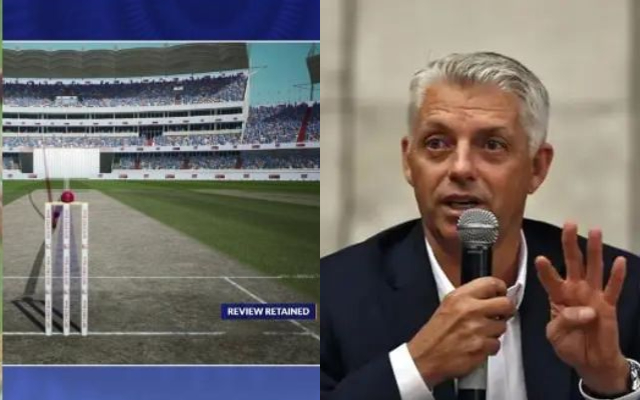Hawkeye’s founder Paul Hawkins gave a big statement on Ben Stokes’s statement of overturning the umpire’s call.
At present, there is a lot of discussion about Hawkeye in the cricket world. Paul Hawkins (Image Credit- Twitter) These days, there is a constant discussion in the cricket world about umpire’s call. So, in the ongoing Test series between India and England, the way Jack Crawley and Joe Root were out on the umpire’s call, this issue got further aired. On the other hand, England’s Test captain Ben Stokes had even said that umpires’ calls should be removed from the Decision Review System (DRS). However, now Paul Hawkins, founder of HawkEye, a technology that determines impact in umpires’ calls, has given his opinion on this issue. Paul Hawkins gave a big statement Let us tell you that regarding the technology used in DRS, Hawkins said on The Analyst Show – When ICC was considering bringing DRS, the idea of bringing Umpire’s Call was David Richardson’s, because he was the one in charge at that time. Therefore, in international cricket, the umpire’s call is prepared in such a way that the umpires can be evaluated internationally. But if players are out LBW wrongly then they have got a margin of error in that technique. However, it is up to the umpire whether he marks it (impact) or not. Initially it was a point, due to which it could be easily sold to the umpire. Actually Hawkeye is more accurate than the umpire’s call, but when you use any technique from zero, the umpire’s call matters. Except cricket, in other sports it will be certain whether he will be out or not out. From this statement given by Paul Hawkins, you can guess that there is no problem in Hawkeye technology, but if umpire’s call is to be given importance then margin of error will always be seen.
Amidst the discussion about HawkEye after Joe Root was given out LBW in the ongoing Test series against India, its founder gave a big statement.
Joe Root was disappointed after being given out LBW in the second innings of the fourth Test in Ranchi. Joe Root (Image Credit- Twitter X) Currently a five-match Test series is being played between India and England. So, after English player Joe Root was out LBW in the fourth Test match of this series, there was a lot of discussion about Hawk-Eye and Decision Review System (DRS). Let us tell you that in this Test match held in Ranchi, in the 17th over of England’s second innings, Root missed one of Ashwin’s balls, on which Ashwin appealed, but this appeal was rejected by on-field umpire Kumar Dharmasena. However, after this, on Ashwin’s appeal, captain Rohit took DRS review and in Hawk Eye it was found that some part of the ball was hitting the stump along with the line of the wicket. So after this the on-field umpire’s decision was changed, and Root was given out. So, after the end of this match, England captain Ben Stokes was seen being very vocal about the umpire’s call in DRS and in the cricket world, Hawk-Eye, the technology that helps the third umpire in DRS, got embroiled in a lot of controversies. However, now amidst all this, the creator of this technology, Paul Hawkins, has given a big statement. Paul Hawkins gave a big statement regarding Hawk-Eye Let us tell you that amidst these discussions, while talking on ‘The Analyst’ podcast, Hawkins said – To get an accurate decision, first of all you measure the width of the stump on every day of Test cricket, and then whether the ball is in line or not. After this a straight line is formed. This line is very important (which is outside the route). In tennis sometimes you have zero millimeter margin in or out of the line. But there is a rule in tennis that it is not given out until zero margin is achieved. Tennis we just mark bounce marks for this. But only after showing zero millimeter as 1 millimeter, we will be able to show the impact to the audience. It may sound like a bit of a presentation, but it makes a lot of things clear to the audience. If the ball had not come out after falling it would have been more obvious on TV. So you can see more clearly above the line, which automatically happens when the ball is pitched outside the leg stump. We gave the correct answer as per the rules. But after all this we have an opportunity to improve our presentation and things related to it.







